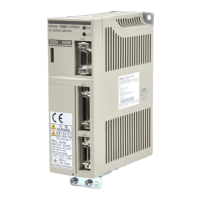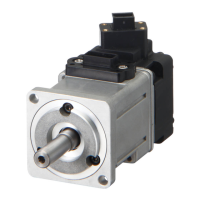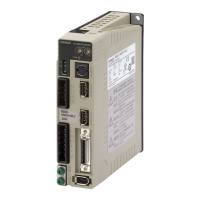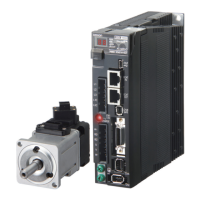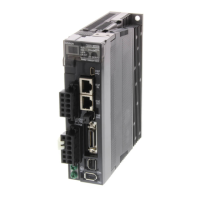2-113
D Servomotor and Mechanical System Temperature Characteristics
• W-series AC Servomotors use rare earth magnets (neodymium-iron magnets). The temperature co-
efficient for these magnets is approximately –0.13%/°C. As the temperature drops, the Servomotor’s
momentary maximum torque increases, and as the temperature rises the Servomotor’s momentary
maximum torque decreases. When the normal temperature of 20°C and –10°C are compared, the
momentary maximum torque increases by approximately 4%. Conversely, when the magnet warms
up to 80°C from the normal temperature of 20°C, the momentary maximum torque decreases by
approximately 8%.
• Generally, in a mechanical system, when the temperature drops the friction torque increases and the
load torque becomes larger. Therefore, overloading may occur at low temperatures. In particular, in
systems which use deceleration devices, the load torque at low temperatures may be nearly twice
the load torque at normal temperatures. Check with a current monitor to see whether overloading is
occurring at low temperatures, and how much the load torque is. Likewise, check to see whether
there is abnormal Servomotor overheating or alarms are occurring at high temperatures.
• An increase in load friction torque visibly increases load inertia. Therefore, even if the Servo Driver
parameters are adjusted at a normal temperature, there may not be optimal operation at low temper-
atures. Check to see whether there is optimal operation at low temperatures too.
Caution Do not use 1.3-kW, 2.9-kW, 4.4-kW, 5.5-kW, 7.5-kW, 11-kW, or 15-kW Servomotors within
the shaded portions of the following diagrams. If used in these regions, the Servomotor may
overheat, causing the encoder to malfunction.
Effective torque (NSm)
Ambient temperature (_C)
R88M-W1K315T (1.3 kW)
Effective torque (NSm)
Ambient temperature (_C)
R88M-W4K415T (4.4 kW)
Effective torque (NSm)
Ambient temperature (_C)
R88M-W2K915T (2.9 kW)
Effective torque (NSm)
Ambient temperature (_C)
R88M-W5K515T (5.5 kW)
Effective torque (NSm)
Ambient temperature (_C)
R88M-W7K515T (7.5 kW)
Effective torque (NSm)
Ambient temperature (_C)
R88M-W11K015T (11 kW)
Effective torque (NSm)
Ambient temperature (_C)
R88M-W15K015T (15 kW)
Standard Models and Specifications Chapter 2
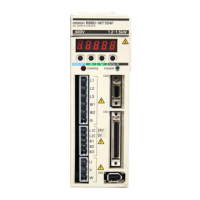
